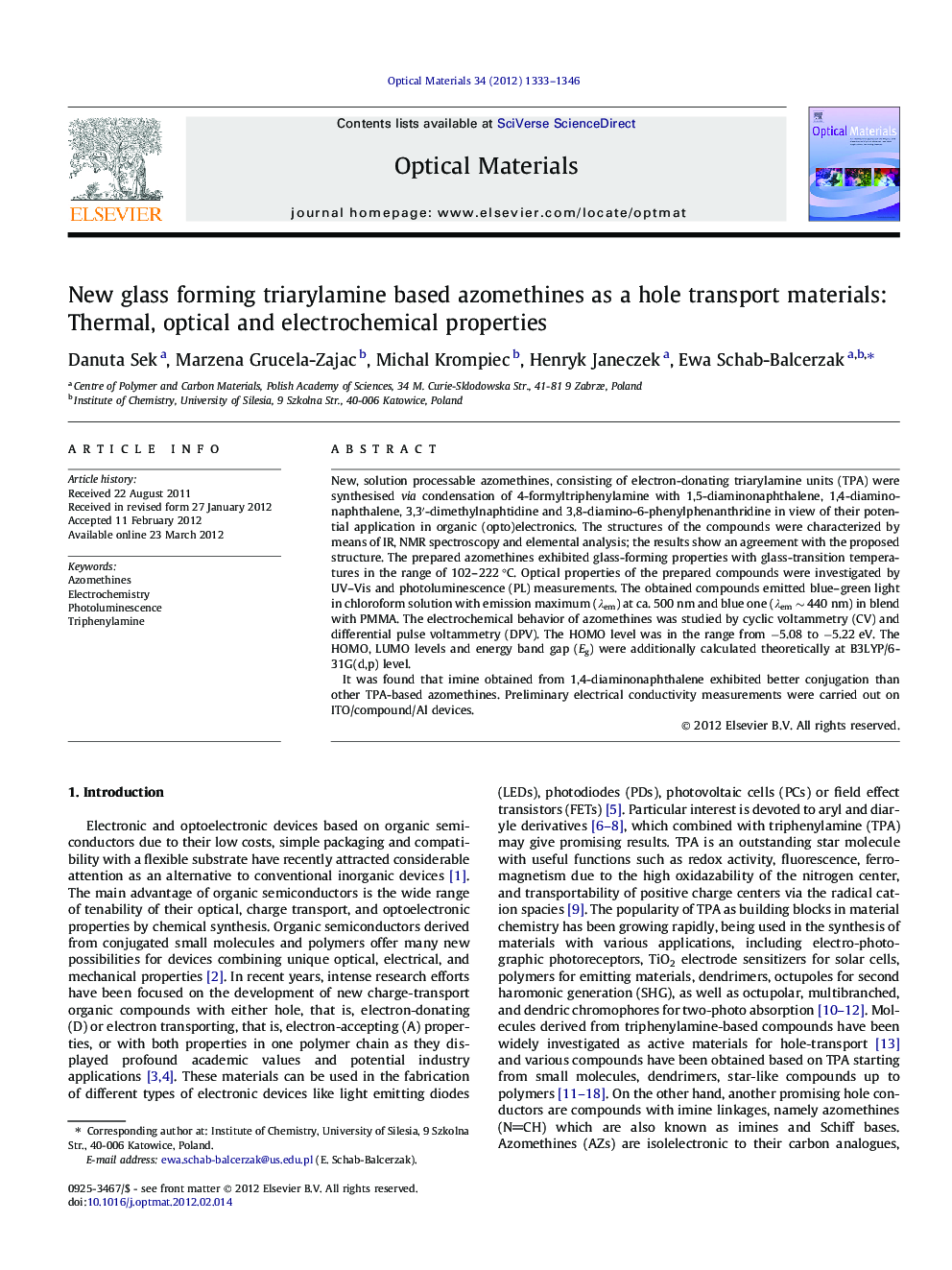| Article ID | Journal | Published Year | Pages | File Type |
|---|---|---|---|---|
| 1495031 | Optical Materials | 2012 | 14 Pages |
New, solution processable azomethines, consisting of electron-donating triarylamine units (TPA) were synthesised via condensation of 4-formyltriphenylamine with 1,5-diaminonaphthalene, 1,4-diaminonaphthalene, 3,3′-dimethylnaphtidine and 3,8-diamino-6-phenylphenanthridine in view of their potential application in organic (opto)electronics. The structures of the compounds were characterized by means of IR, NMR spectroscopy and elemental analysis; the results show an agreement with the proposed structure. The prepared azomethines exhibited glass-forming properties with glass-transition temperatures in the range of 102–222 °C. Optical properties of the prepared compounds were investigated by UV–Vis and photoluminescence (PL) measurements. The obtained compounds emitted blue–green light in chloroform solution with emission maximum (λem) at ca. 500 nm and blue one (λem ∼ 440 nm) in blend with PMMA. The electrochemical behavior of azomethines was studied by cyclic voltammetry (CV) and differential pulse voltammetry (DPV). The HOMO level was in the range from −5.08 to −5.22 eV. The HOMO, LUMO levels and energy band gap (Eg) were additionally calculated theoretically at B3LYP/6-31G(d,p) level.It was found that imine obtained from 1,4-diaminonaphthalene exhibited better conjugation than other TPA-based azomethines. Preliminary electrical conductivity measurements were carried out on ITO/compound/Al devices.
► We obtained new triarylamine based azomethines. ► The imines are solution processable and form molecular glasses. ► We investigated their thermal, photoluminescence, and electrochemical properties. ► They can be considered as promising material for potential optoelectronics applications.
